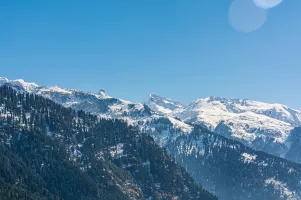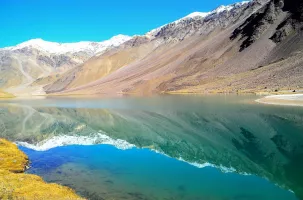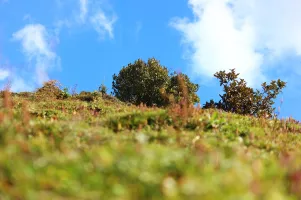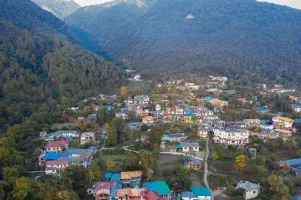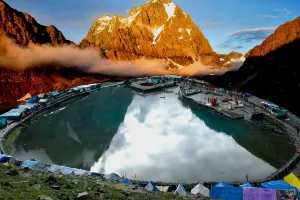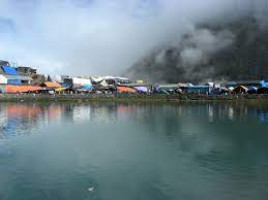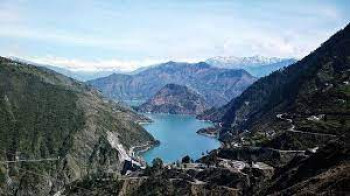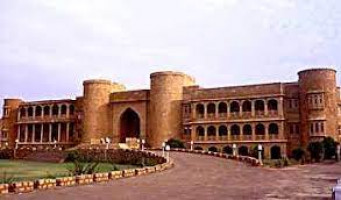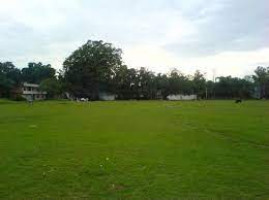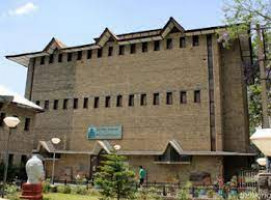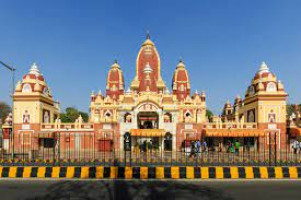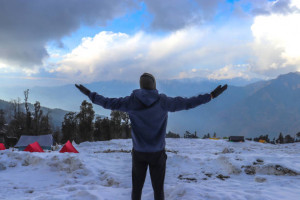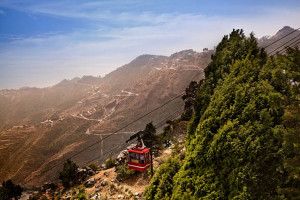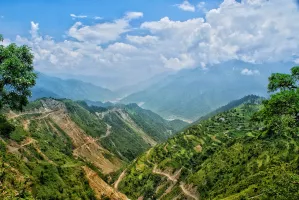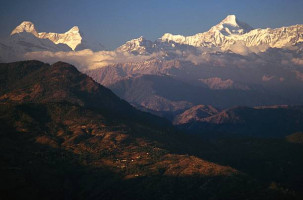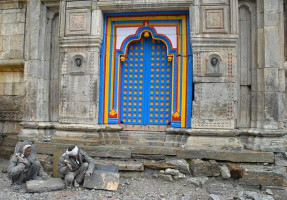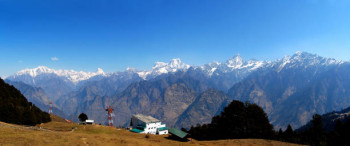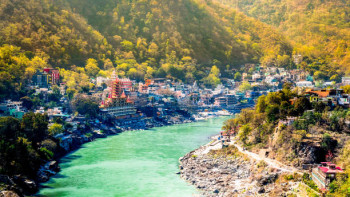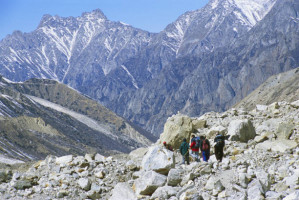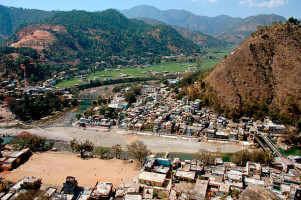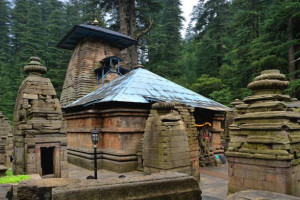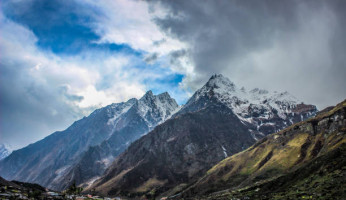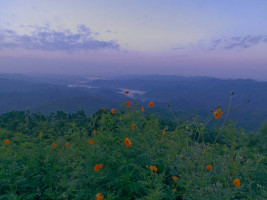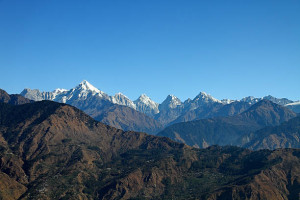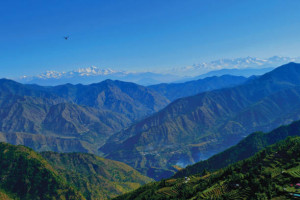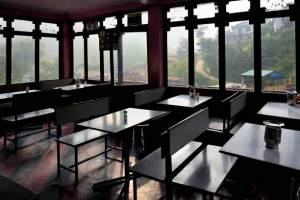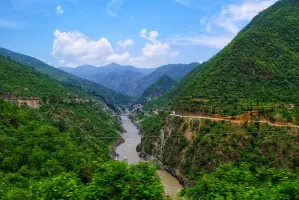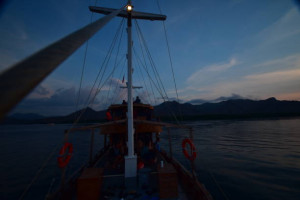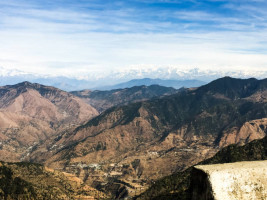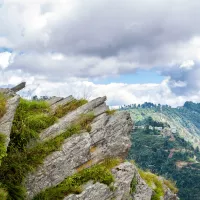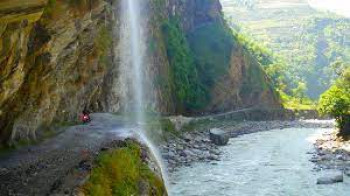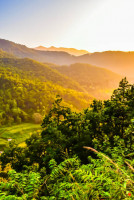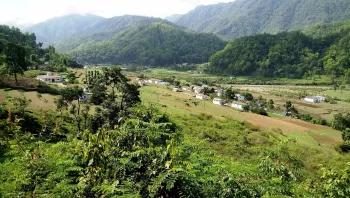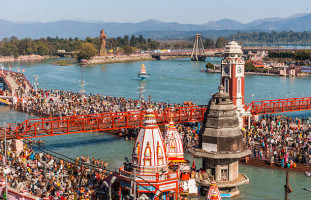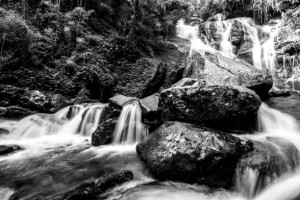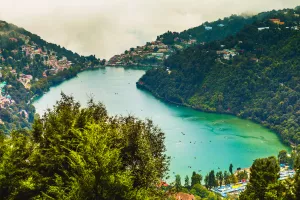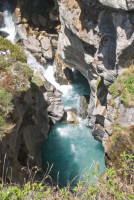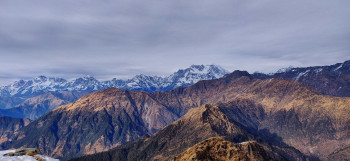Hi User
Navigation
28 Chamba Tour Packages
Starting from ₹13,500 only
Get Upto 30% Off on Booking within 7 Days
4.8
Rating
Rating
TAAI
Member
Member
100K+
Happy Travellers
Happy Travellers
24x7
Support
Support
About Chamba - Customise & Book at Best Rates
Best Experiences in Chamba
1. Chamba Rumal Embroidery: Chamba is known for its unique and exquisite embroidery style, which is done on fine muslin fabric. Visitors can buy Chamba rumal products like wall hangings, cushion covers, and tablecloths or even learn the embroidery technique.
2. Mountain Biking: Chamba's rugged terrain and picturesque landscapes make it an excellent destination for mountain biking. Visitors can hire a bike and explore the district's scenic trails and mountain passes.
3. Apple Orchards: Chamba is home to many apple orchards, and visitors can experience the process of apple farming, from picking to packing. They can also taste the freshly picked apples and buy some to return home.
4. Folk Music and Dance: Chamba has a rich culture of folk music and dance, and visitors can witness the locals perform traditional dances like the Ghurmi, the Bhangra, and the Jhoori.
5. Photography: Chamba's scenic landscapes, ancient architecture, and colorful culture provide ample opportunities for photography enthusiasts. From capturing the stunning views of the Himalayas to the intricate carvings on the temples, there's something for everyone.
Places to Visit in Chamba
1. Khajjiar: Known as the "Mini Switzerland of India", Khajjiar is a picturesque hill station of 6,500 feet above sea level. The place is famous for its lush green meadows, dense forests, and sparkling lake, surrounded by snow-capped mountains. Visitors can enjoy activities like zorbing, paragliding, and horse riding.
2. Chamera Lake: Chamera Lake is a stunning artificial lake in the Chamba district, offering breathtaking views of the surrounding hills and valleys. Visitors can enjoy boating and other water sports activities.
3. Bhuri Singh Museum: This museum houses a rich collection of ancient paintings, sculptures, and manuscripts, showcasing the history and culture of Chamba. It is named after Raja Bhuri Singh, a former ruler of Chamba.
4. Manimahesh Lake: A sacred lake at the foot of Mount Kailash, known for its religious significance and natural beauty. Visitors can trek to the lake and witness wonderful views of the surrounding valleys and mountains.
5. Kalatop Wildlife Sanctuary: A popular wildlife sanctuary located in the Chamba district is home to a variety of flora and fauna, including leopards, deer, bears, and birds. Visitors can enjoy trekking and camping in the sanctuary.
6. Chamunda Devi Temple: Chamunda Devi Temple is a popular Hindu shrine located in Chamba, Himachal Pradesh, India. It is dedicated to the Hindu goddess Chamunda, also known as Chamundi. The temple is believed to be over 700 years old and is situated atop a hill offering panoramic views of the surrounding valley.
7. Rang Mahal: A stunning palace built by the former rulers of Chamba showcases the unique blend of Pahari and Mughal architecture. The palace is known for its exquisite paintings, intricate woodwork, and beautiful gardens.
How Many Days Do You Need to See Chamba?
To truly experience the beauty and culture of Chamba, 1-2 days are more than enough. This allows you enough time to explore the lesser-known places, interact with the locals, and indulge in activities like trekking, camping, and river rafting. You can also visit the local markets to shop for traditional handicrafts and taste the local cuisine. Chamba has much to offer, and a few days of exploration will allow you to experience its true charm and essence.
To truly experience the beauty and culture of Chamba, 1-2 days are more than enough. This allows you enough time to explore the lesser-known places, interact with the locals, and indulge in activities like trekking, camping, and river rafting. You can also visit the local markets to shop for traditional handicrafts and taste the local cuisine. Chamba has much to offer, and a few days of exploration will allow you to experience its true charm and essence.
Best Time to Visit Chamba
The best time to visit Chamba is from March to June and September to November. You can enjoy clear skies and pleasant weather during these months. During this time, you can enjoy outdoor activities like trekking, camping, and sightseeing without any hindrances. From December to February, the winters can be frigid and may make outdoor activities challenging. Still, it is a great time to enjoy the view of snow-capped mountains and winter sports.
The best time to visit Chamba is from March to June and September to November. You can enjoy clear skies and pleasant weather during these months. During this time, you can enjoy outdoor activities like trekking, camping, and sightseeing without any hindrances. From December to February, the winters can be frigid and may make outdoor activities challenging. Still, it is a great time to enjoy the view of snow-capped mountains and winter sports.
However, avoid the monsoon season from July to August, as heavy rainfall may cause landslides and disrupt your plans.
Why Should You Buy Packages for Chamba?
Chamba is a lesser-known destination, and a local tour operator can help you explore the best places, hidden gems, and local culture. With a package, you don't have to worry about planning and booking everything, saving you time and effort. A tour operator can ensure your safety during activities like trekking and camping and handle emergencies. In addition, many tour operators offer customized packages, allowing you to choose activities and places based on your interests and preferences.
Chamba is a lesser-known destination, and a local tour operator can help you explore the best places, hidden gems, and local culture. With a package, you don't have to worry about planning and booking everything, saving you time and effort. A tour operator can ensure your safety during activities like trekking and camping and handle emergencies. In addition, many tour operators offer customized packages, allowing you to choose activities and places based on your interests and preferences.
Read More
Recommended Chamba Itinerary from Our Trip Experts
4 Nights / 5 Days Chamba In-Depth Exploration
Destination Covered: Mathura, Vrindavan, Gokul, Govardhan, Barsana, Nandgaon
Day Breakdown:
Day 1: Arrival in Mathura, visit Shri Krishna Janmabhoomi Temple, Dwarkadhish Temple, evening aarti at Vishram Ghat 🚗
Day 2: Visit Banke Bihari Temple, ISKCON Temple, Radha Raman Temple, evening light and sound show at Prem Mandir 🚐
Day 3: Visit Gokul temples, Gokulnath Temple, Raman Reti, explore Govardhan Hill and Kusum Sarovar 🏞️
Day 4: Visit Nandgaon, Nand Bhavan Temple, Barsana, Radha Rani Temple, return to Mathura 🚐
Day 5: Visit Kans Qila, Potara Kund, final shopping and departure 🚗
Day 2: Visit Banke Bihari Temple, ISKCON Temple, Radha Raman Temple, evening light and sound show at Prem Mandir 🚐
Day 3: Visit Gokul temples, Gokulnath Temple, Raman Reti, explore Govardhan Hill and Kusum Sarovar 🏞️
Day 4: Visit Nandgaon, Nand Bhavan Temple, Barsana, Radha Rani Temple, return to Mathura 🚐
Day 5: Visit Kans Qila, Potara Kund, final shopping and departure 🚗
Theme Tag: 👨👩👧👦 Family💕 Couple
Packages by Themes
Best Selling Tour Packages for Chamba
| Packages | Price | Duration | Destinations | Quotes |
|---|---|---|---|---|
| 3 Days In Chamba-Chamba Tour Package Of 2N 3D | ₹ (INR) 9500 | 2 Nights / 3 Days | Chamba | |
| Premium Tour Package Of Chamba-Chamba Tour Package Of 5N 6D | ₹ (INR) 16500 | 5 Nights / 6 Days | Chamba | |
| Romantic Trip Of Chamba-Chamba Honeymoon Tour Package Of 4N 5D | ₹ (INR) 20000 | 4 Nights / 5 Days | Chamba | |
| 2N/3D Kasol Tour Package | ₹ (INR) 6999 | 6 Nights / 7 Days | Chamba, Kasol | |
| Romantic Trip Of Chamba-Chamba Honeymoon Tour Package Of 4N 5D | ₹ (INR) 16000 | 4 Nights / 5 Days | Chamba |
Showing 28 Chamba Tour Packages
OXO Journey (A unit of Inland Tourways)
Verified
Tour package by OXO Journey (A unit of Inland Tourways)
Verified
Chamba
2N / 3D
HotelCab Transfer
Starts from
₹10,556 10% off
₹ 9,500
per person
4.8
232 Reviews
₹10,556 10% off
₹ 9,500
per person
India Escapes
Verified
Tour package by India Escapes
Verified
Chamba
5N / 6D
HotelCab Transfer
Starts from
₹19,412 15% off
₹ 16,500
per person
4.1
18 Reviews
₹19,412 15% off
₹ 16,500
per person
Tourwithme
Verified
Tour package by Tourwithme
Verified
Chamba
4N / 5D
HotelCab Transfer
Starts from
₹23,529 15% off
₹ 20,000
per person
4.9
217 Reviews
₹23,529 15% off
₹ 20,000
per person
Quick Filters
Price Range:
Duration:
Theme:
YATRACO
Verified
Tour package by YATRACO
Verified
HotelCab Transfer
Chamba, Kasol
6N / 7D
HotelCab Transfer
Starts from
₹8,749 20% off
₹ 6,999
per person
4.2
51 Reviews
₹8,749 20% off
₹ 6,999
per person
India Escapes
Verified
Tour package by India Escapes
Verified
Chamba
4N / 5D
HotelCab Transfer
Starts from
₹ 16,000
per person
4.1
18 Reviews
₹ 16,000
per person
Why Book from Us?
Customisation & Flexibility
Local Expertise of Travel Experts
24x7 Dedicated Support
YATRACO
Verified
Tour package by YATRACO
Verified
Chamba
2N / 3D
HotelCab Transfer
Starts from
₹15,294 15% off
₹ 13,000
per person
4.2
51 Reviews
₹15,294 15% off
₹ 13,000
per person
Quick Filters
Price Range:
Duration:
Theme:
India Escapes
Verified
Tour package by India Escapes
Verified
Chamba
2N / 3D
HotelCab Transfer
Starts from
₹18,824 15% off
₹ 16,000
per person
4.1
18 Reviews
₹18,824 15% off
₹ 16,000
per person
SunRaj Tours & Travel
Verified
Tour package by SunRaj Tours & Travel
Verified
Chamba
4N / 5D
HotelCab Transfer
Starts from
₹28,824 15% off
₹ 24,500
per person
₹28,824 15% off
₹ 24,500
per person
YATRACO
Verified
Tour package by YATRACO
Verified
Chamba
2N / 3D
HotelCab Transfer
Starts from
₹13,332 25% off
₹ 9,999
per person
4.2
51 Reviews
₹13,332 25% off
₹ 9,999
per person
Quick Filters
Price Range:
Duration:
Theme:
India Escapes
Verified
Tour package by India Escapes
Verified
Chamba
3N / 4D
HotelCab Transfer
Starts from
₹22,857 30% off
₹ 16,000
per person
4.1
18 Reviews
₹22,857 30% off
₹ 16,000
per person
Why Book from Us?
Customisation & Flexibility
Local Expertise of Travel Experts
24x7 Dedicated Support
India Escapes
Verified
Tour package by India Escapes
Verified
Chamba
4N / 5D
HotelCab Transfer
Starts from
₹20,000 10% off
₹ 18,000
per person
4.1
18 Reviews
₹20,000 10% off
₹ 18,000
per person
Trip It Now
Verified
Tour package by Trip It Now
Verified
Chamba
2N / 3D
HotelCab Transfer
Starts from
₹17,167 10% off
₹ 15,450
per person
₹17,167 10% off
₹ 15,450
per person
Quick Filters
Price Range:
Duration:
Theme:
YATRACO
Verified
Tour package by YATRACO
Verified
Chamba
4N / 5D
HotelCab Transfer
Starts from
₹16,667 10% off
₹ 15,000
per person
4.2
51 Reviews
₹16,667 10% off
₹ 15,000
per person
India Escapes
Verified
Tour package by India Escapes
Verified
Chamba
3N / 4D
HotelCab Transfer
Starts from
₹20,667 25% off
₹ 15,500
per person
4.1
18 Reviews
₹20,667 25% off
₹ 15,500
per person
Starts from
₹32,353 15% off
₹ 27,500
per person
₹32,353 15% off
₹ 27,500
per person
Quick Filters
Price Range:
Duration:
Theme:
Why Book from Us?
Customisation & Flexibility
Local Expertise of Travel Experts
24x7 Dedicated Support
YATRACO
Verified
Tour package by YATRACO
Verified
Chamba
3N / 4D
HotelCab Transfer
Starts from
₹27,453 25% off
₹ 20,590
per person
4.2
51 Reviews
₹27,453 25% off
₹ 20,590
per person
YATRACO
Verified
Tour package by YATRACO
Verified
Chamba
3N / 4D
HotelCab Transfer
Starts from
₹17,143 30% off
₹ 12,000
per person
4.2
51 Reviews
₹17,143 30% off
₹ 12,000
per person
Trip Charm
Verified
Tour package by Trip Charm
Verified
Chamba
2N / 3D
HotelCab Transfer
Starts from
₹30,000 10% off
₹ 27,000
per person
5
20 Reviews
₹30,000 10% off
₹ 27,000
per person
Quick Filters
Price Range:
Duration:
Theme:
Trip Tides
Verified
Tour package by Trip Tides
Verified
Chamba
2N / 3D
HotelCab Transfer
Starts from
₹18,824 15% off
₹ 16,000
per person
₹18,824 15% off
₹ 16,000
per person
India Escapes
Verified
Tour package by India Escapes
Verified
Chamba
2N / 3D
HotelCab Transfer
Starts from
₹21,429 30% off
₹ 15,000
per person
4.1
18 Reviews
₹21,429 30% off
₹ 15,000
per person
Why Book from Us?
Customisation & Flexibility
Local Expertise of Travel Experts
24x7 Dedicated Support
Loading more packages...
Please wait
No more packages to load
You've reached the end
